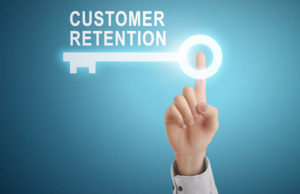
This story was originally published on July 14, 2011, and is brought to you today as part of our Best of ECT News series.
Whenever I talk about CRM to people who aren’t CRM experts, I find the discussion devolving into an examination of the real common denominator in all of this: the human aspects of doing business. The “R” of relationships resonates far more strongly with people than the “M” in management, and for good reason.
It’s a similar thing for social CRM. When I talk to my peers, the conversations are often tactical — how do we use social to find leads? To provide service? To build information for sales?
These are all important things — and things that contribute greatly to ROI on a social CRM effort. But they’re all fairly business-centric — they expand on things businesses already try to do and help them do them better.
There’s one aspect of social CRM that helps businesses do what few of us can do. It’s a thing described in Scottish poet Robert Burns’ “To a Louse” (which, as far as I can tell, was not written as a response to a bad customer service experience).
“O wad some Pow’r the giftie gie us/To see ousels as others see us,” wrote Burns in his heavy-duty Scottish dialect.
To put it in plain, contemporary English: if only some power could give us the gift to see ourselves as others see us.
Voting With Their Feet
That’s one capability that social media and social CRM offer that we’ve never had before. I’m not talking about sentiment monitoring — although that’s the macro-level application of what I’m thinking about.
It’s the idea that in the social world, we have the ability to discover how individual customers view our business and our its behavior.
Most people are not inclined to share their opinion of their experience. It’s not how we’re set up. Expectations of an experience are well understood, and the customer’s experience usually falls within the range of acceptability, and that’s it. The transaction is over without much notice by the customer.
There are customer experiences that fall outside of that middle range — the very good experiences, and the very bad experiences. These leave a lasting impression.
Once in a blue moon, customers tell businesses about their very good experiences with them. More frequently, they share their displeasure at very bad experiences. But for the most part, they tend to say nothing at all.
The typical business hears from just 4 percent of its unhappy customers, while the other 96 percent simply stop doing business with them, according to a Harvard Business Reviewarticle published last year.
Pain Points
But do they say nothing at all? These days, probably not. Most of us can do without the conflict of a face-to-face complaint session. But social media eliminates that conflict and thus makes it easier for customers to speak their minds. If they’re speaking their minds about your business, you should probably listen to them.
Unhappy customers are a great source of intelligence about how your business appears to those on the outside — they are the gift of seeing ourselves as others see us, as observed Mr. Burns (the one from Scotland, not the one from Springfield).
They’re also terrific assets for making specific, tactical changes — do you have an employee who’s a common factor in complaints? Is there a part of your billing process that’s drawing customers’ ire? Are there specific aspects of your product or service that frequently give customers heartburn? Are people chirping about your sales staff’s approach?
You can fix those things — but first, you have to realize they’re problems. Customers should never be considered your “alarm system,” but they are the ultimate arbiters of how effective you are at delivering the experiences they want.
Even if you can double the percentage of the unhappy customers you hear from — from the typical 4 percent to 8 percent — it will represent an enormous jump in your insight into how well you’re doing and what you can do to do better. Listening for the complainers on social media can set up an opportunity to satisfy and perhaps retain them — but, more importantly, it can help you preempt similar dissatisfaction in other customers.





















































